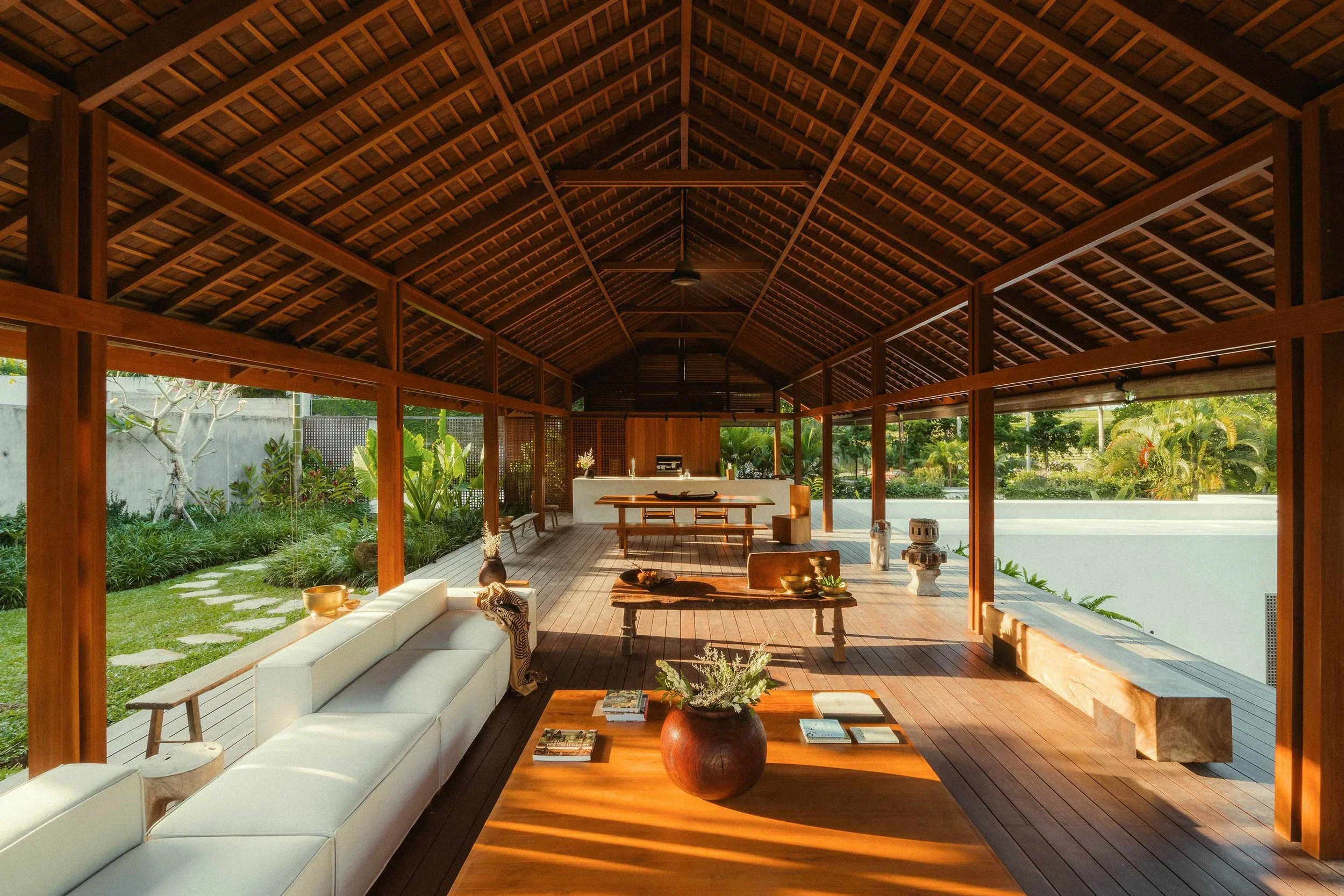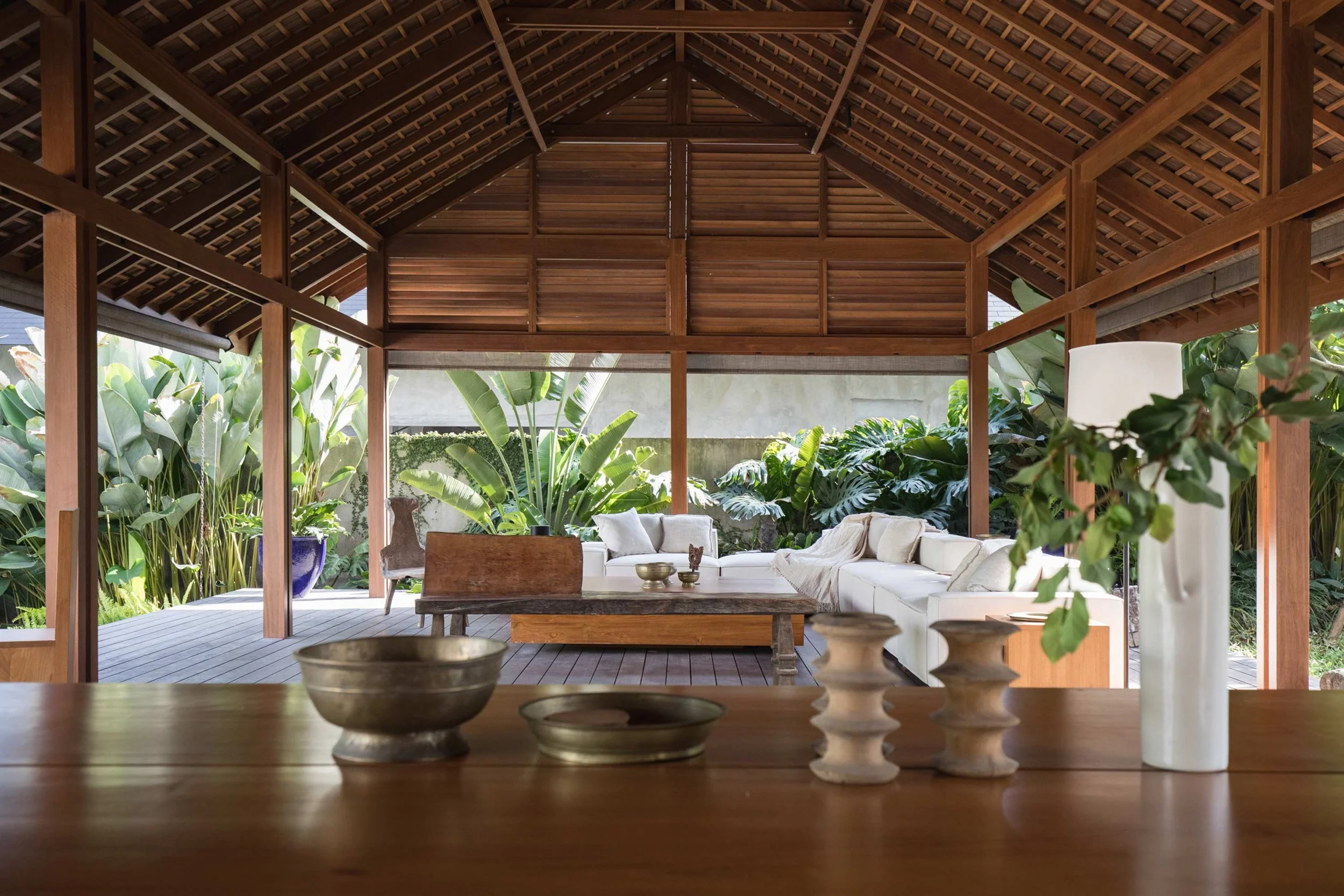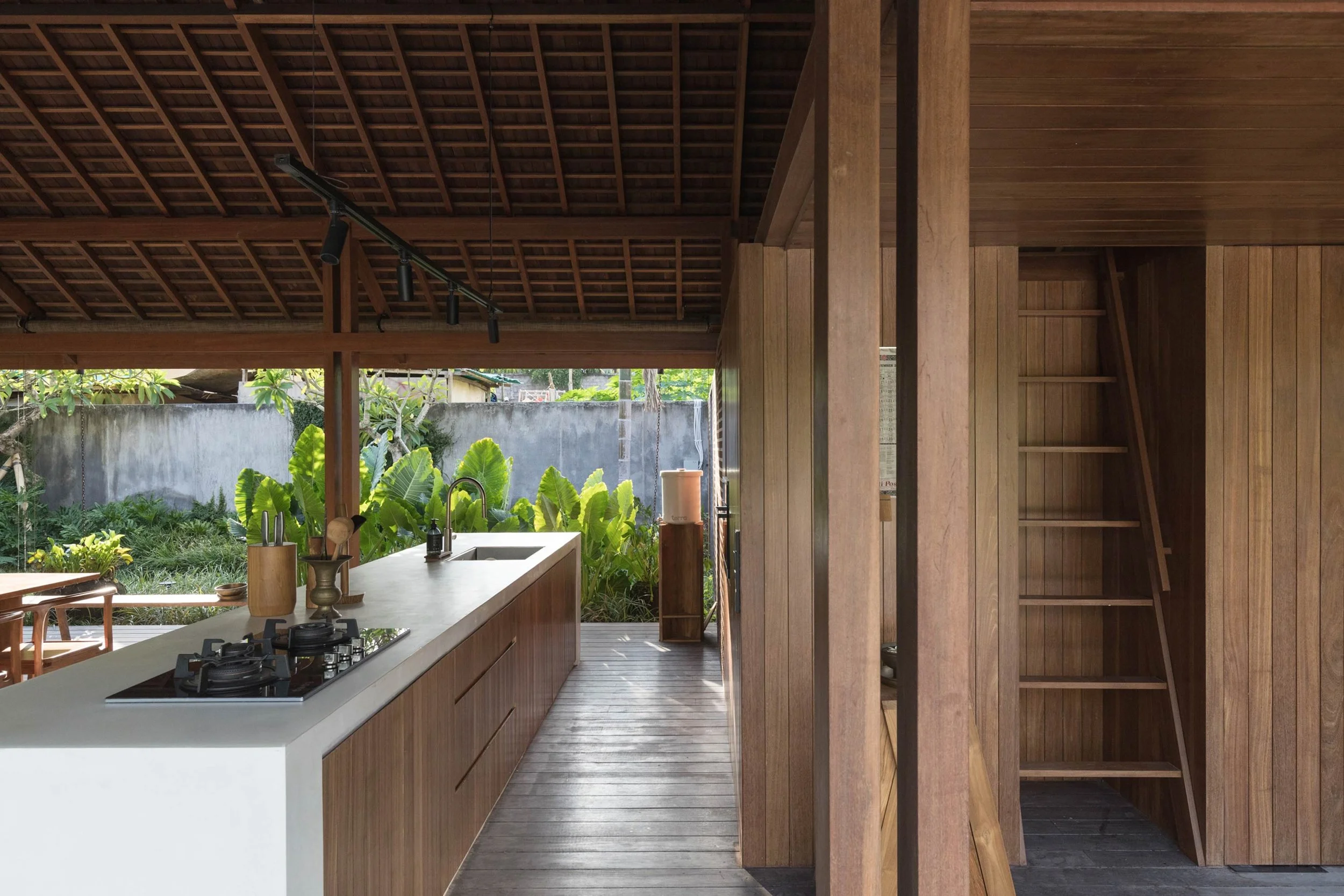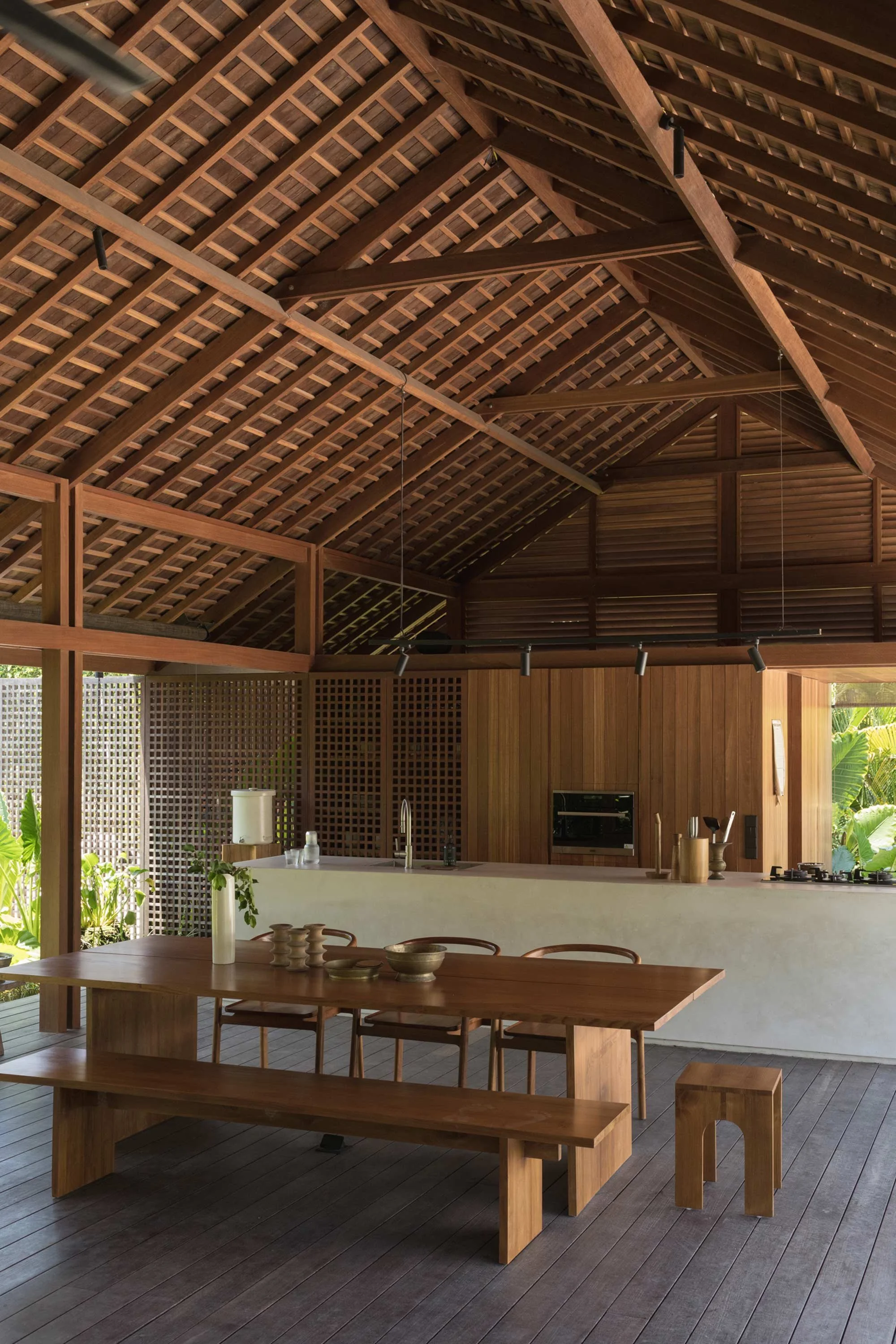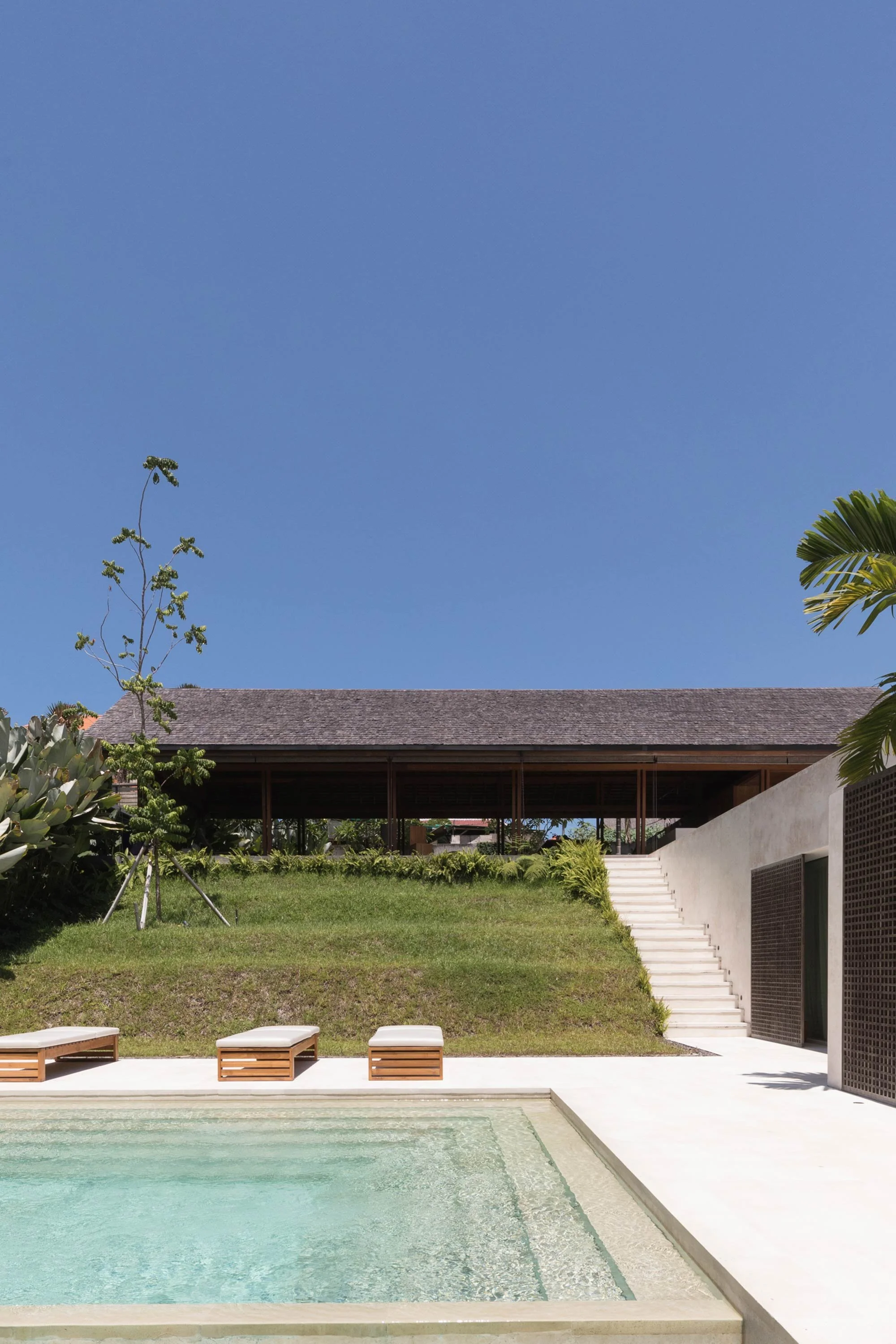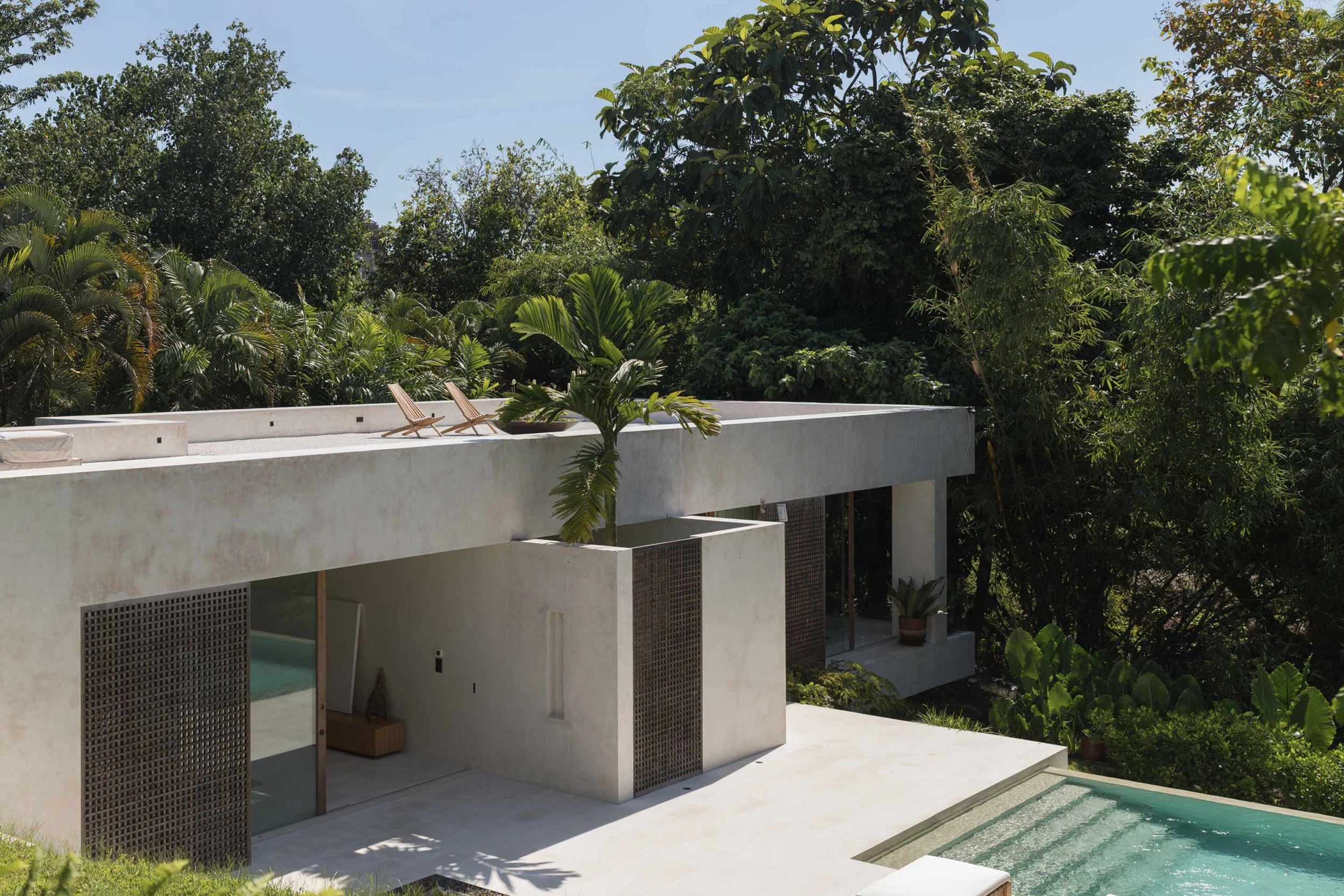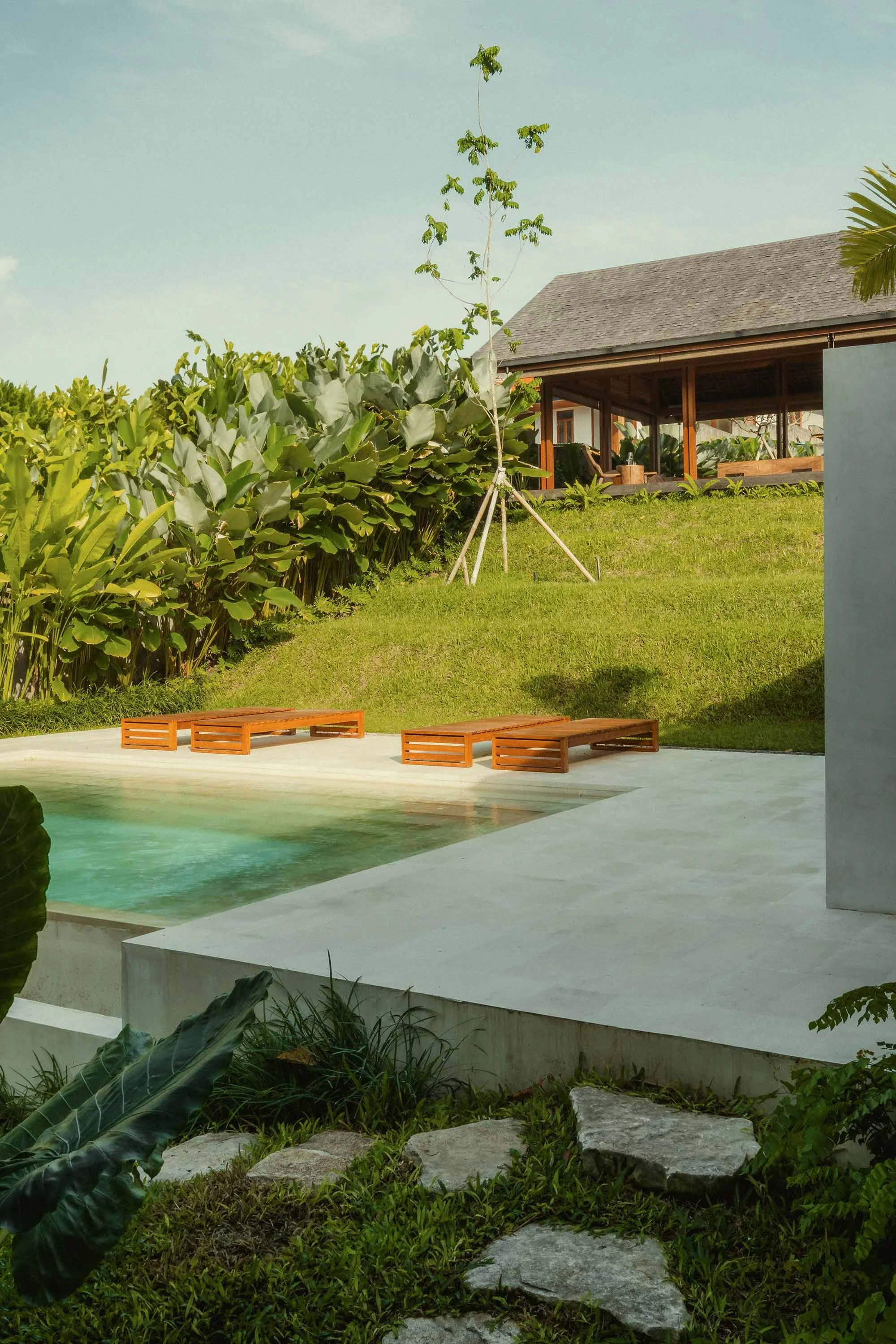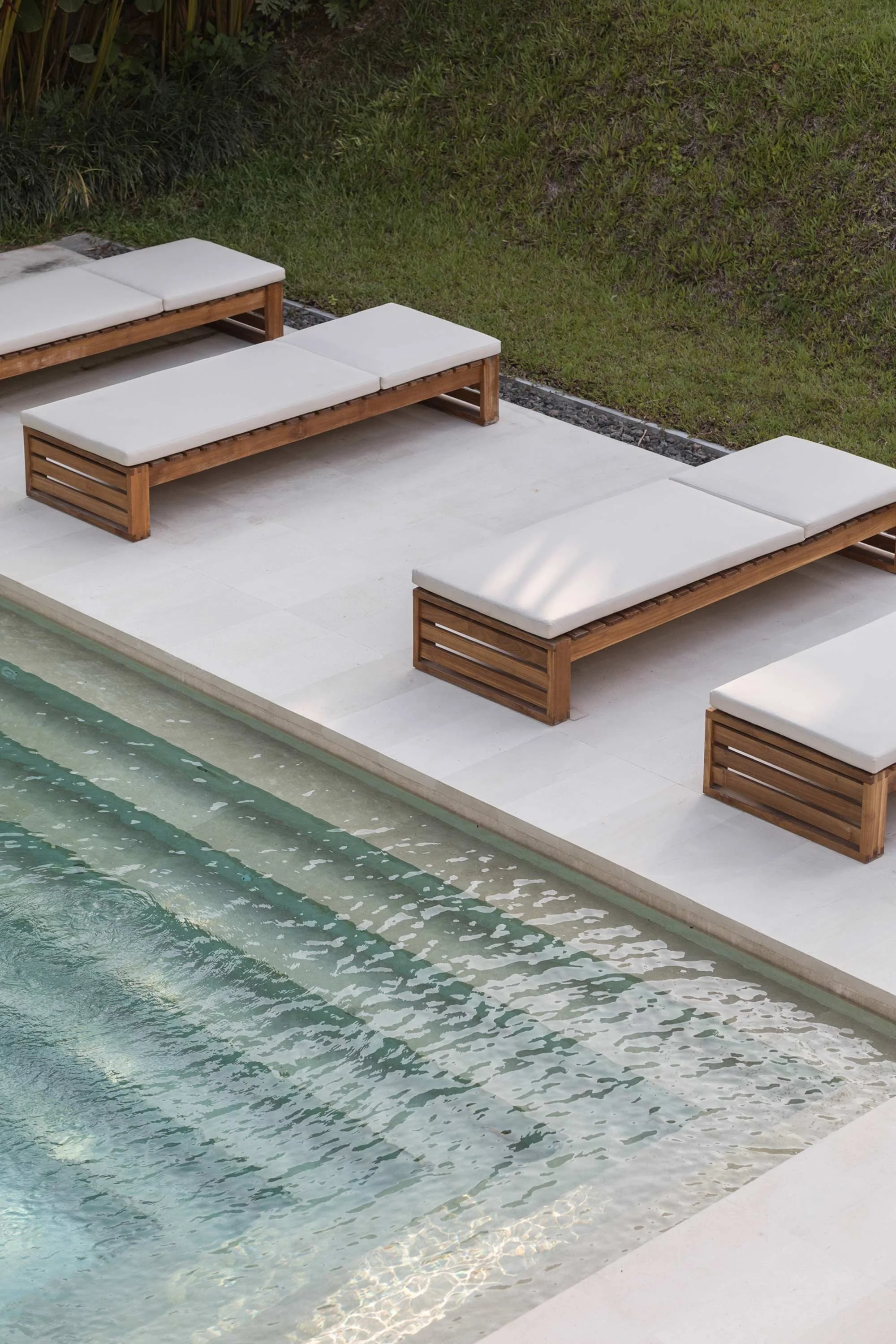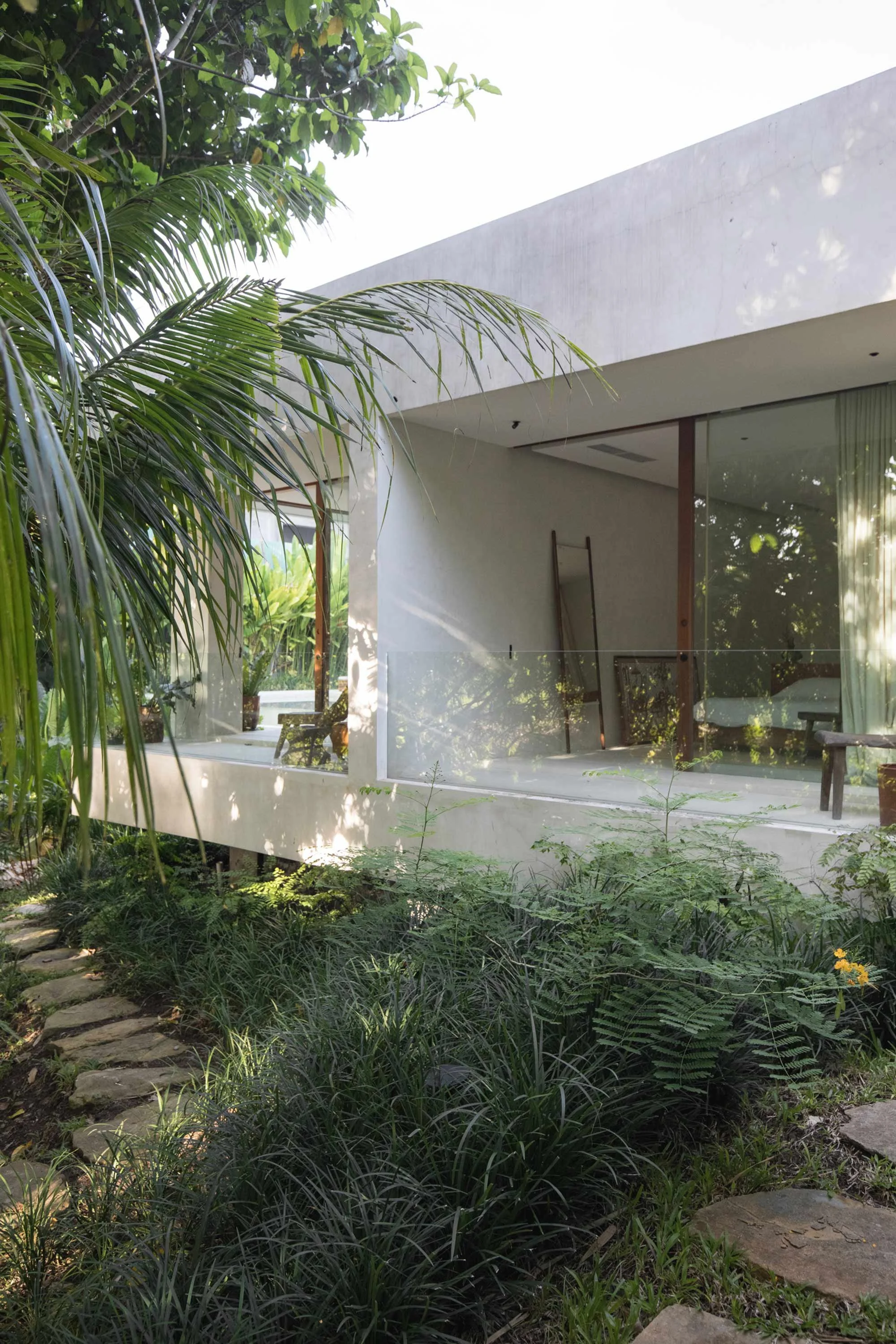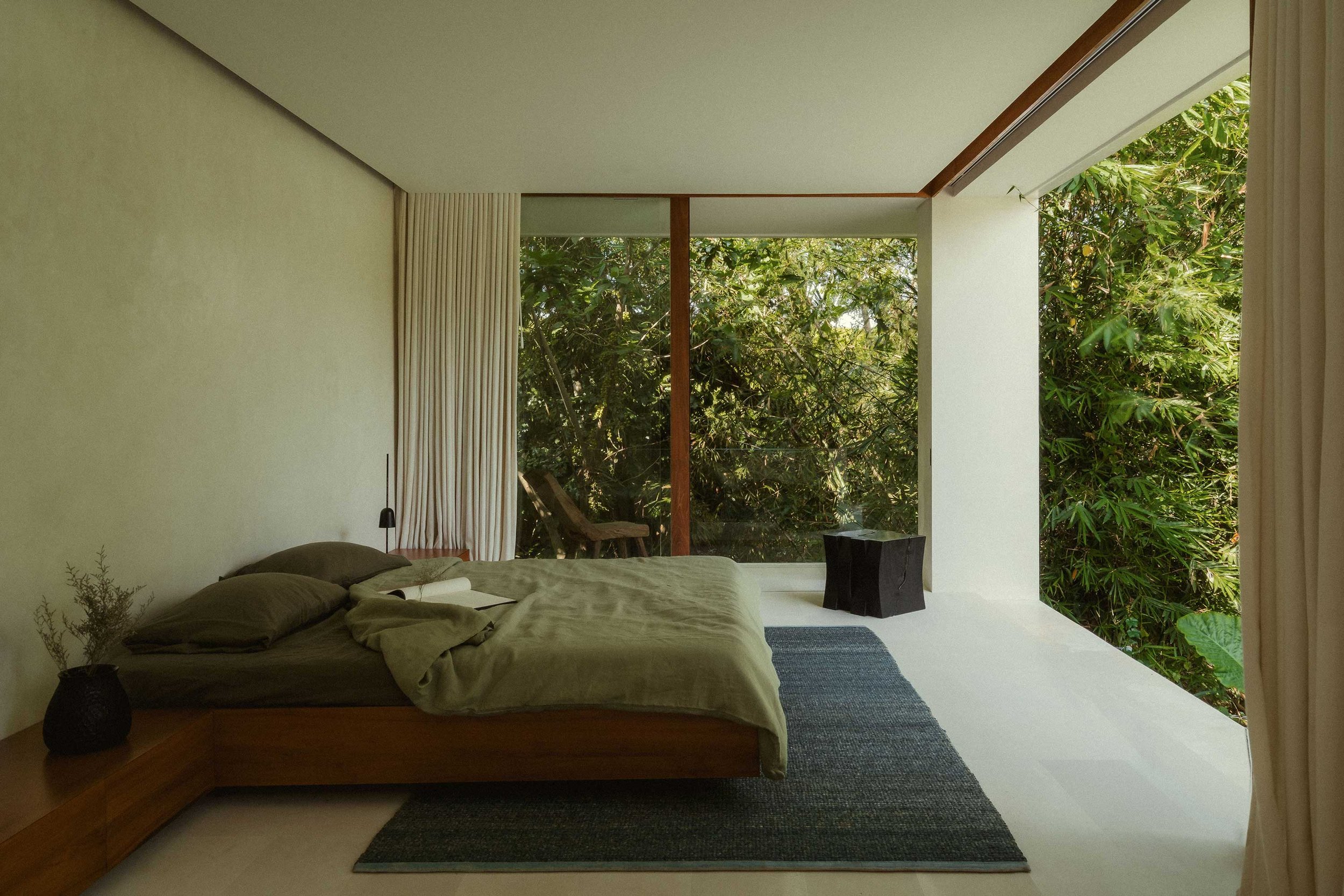A Bali Home That Honours Indonesian Heritage
Atelier Alejandro Borrego shines a light on local materials and craft in this serene residence that blurs the indoors and outdoors
Having always felt a pull to the sea and surf, Jakarta native Ed Gunawan decided to take the plunge and move to Bali at last in 2022. While this meant building his very first home, he wasn’t interested in erecting a monumental residence — paying homage to the land was paramount. ‘In a Balinese village, the only building that should stand out is the temple,’ explains Gunawan.
This core belief led him to Alejandro Borrego, a Spanish architect then based in Bali who had established a growing practice centred on tropical architecture. The result of their synergistic collaboration is exemplified by the simple yet serene pitched roof, which takes reference from the surrounding village type-forms. It’s the site’s defining feature — when you enter, the pavilion stands as the only structure in plain sight, as if there is no home.
Borrego kept the pavilion open as he believes that the joy of Balinese living is a home that segues into its surroundings — in this case, the lush foliage that envelopes the structure, with the jungle and paddies further afield. ‘A home’s integration with nature is a big tenet in our firm, where we place houses in gardens instead of the other way around,’ says Borrego. ‘Over time, the garden becomes the main character.’
Image by Willem Keuppens
The well-ventilated pavilion is at once open and private. In the afternoon, mottled light seeps in, accompanied by an enjoyable breeze. The rushing waters — a stream runs parallel to the pavilion — round out the experience, bringing a calming presence.
A big part of Gunawan’s brief to Borrego was to respect the land’s sloping contour, which led to the creation of an adjacent clean monolithic slab for the bedrooms. It’s made out of palimanan, a cream-coloured sandstone that once again shows the hyper-local and pared-back design approach. ‘A house isn’t a decorative object — it needs to make the life of its owner better,’ Borrego explains. ‘It should be comfortable, beautiful and practical.’ This function-driven simplicity has also aided in the home’s sustainability by minimising the scale of construction and drawing on materials from around the island.
The interior approach is no different, with Gunawan adopting a sensitive approach by celebrating Indonesian craft. Taking the time to put together an assemblage that honours the nation’s rich heritage, he travelled to remote villages just to rummage for homewares that hold meaning. Beyond working with local artisans on furniture with austere forms, Gunawan found antique ceremonial bowls from the Yogyakarta palace, Naka chairs from Jakarta-based furniture brand Kayou, and Kamasan-style artworks.
A subtlety ripples through this home, yet it runs deep with character — Gunawan has bestowed everything with care and intention. Perhaps it’s no surprise that the abode is actually named after a lithe tree that most will miss: the majegau tree planted along the slope. Its bark is traditionally used for incense, as the wood emits a fragrance when burnt — a fitting metaphor for how Gunawan’s home is an aromatic offering to Bali.
Text by Joseph Koh
Image by Tommaso Riva
Image by Tommaso Riva
Image by Tommaso Riva
Image by Tommaso Riva
Image by Tommaso Riva
Image by Tommaso Riva
Image by Tommaso Riva
Image by Tommaso Riva
Image by Tommaso Riva
Image by Tommaso Riva
Image by Tommaso Riva
Image by Tommaso Riva
Image by Tommaso Riva
Image by Willem Keuppens
Image by Tommaso Riva
Image by Willem Keuppens
Image by Tommaso Riva
Image by Tommaso Riva
Image by Tommaso Riva
Image by Willem Keuppens
Image by Willem Keuppens
Image by Tommaso Riva
Image by Willem Keuppens
Image by Tommaso Riva


